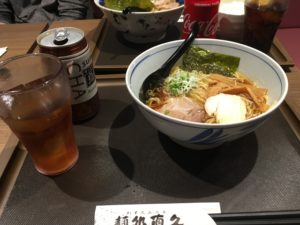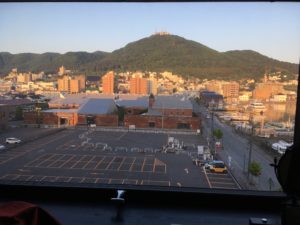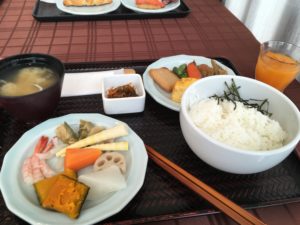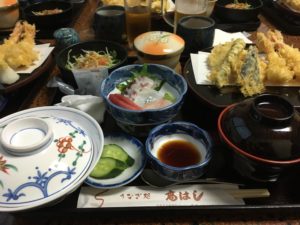Hola!
Today marks the completion of one full week in Cusco! I arrived last Sunday, May 21st, around noon. The journey here was long, but for the most part, painless. My flight to Cusco was perhaps the most enjoyable of the three flights. I was delighted to be able to practice my Spanish on the plane with the girl sitting next to me!
When I first arrived at my homestay, I was greeted by Edy, my host-father. I felt comforted by Edy’s friendly demeanor, contagious smile, and the fact that his name, though spelled differently, is the same as my actual father’s name! Edy directed me to my room upstairs. My roommate had yet arrived, so I quickly set my things down and came downstairs for tea. This served as my introduction to coca tea, which I have had a least twice a day, every day, since the my introduction to the beverage! The coca leaf is very prominent in Peruvian culture, not only because of its ties to ancient Incan spirituality, but because of its remedial properties in helping to soothe altitude sickness. Cusco is 11,200 feet above sea level, and though I did not feel the effects of the altitude immediately upon arrival, it was certainly made evident to me in attempting to walk to the corner of the street and finding myself utterly out of breath.
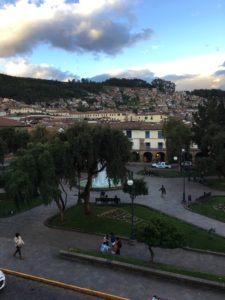
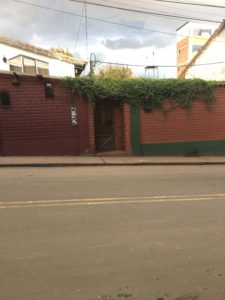 my house from the street
my house from the street
Once I finished my coca tea, Edy invited me to lunch with his family, and he drove us into town. We sat upstairs in a little restaurant. There were only four items on the lunch menu, and Lily suggested I get Caldo de Pollo (chicken soup) so as to ease myself into the food in Cusco, but everybody else got chicharrones, so I figured I might as well try it too and dive right into Peruvian cuisine! After all, chicharrones were not so much of a stretch for me…if I hadn’t before tasted them, I had definitely heard of them and knew what they were. Everything was wonderful, but I was most surprised by the corn! If you ever come to Cusco, expect each kernel of corn to be bloated to a size about 3x bigger than the average kernel in the U.S.
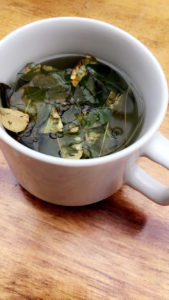 coca tea!
coca tea!
Upon return to the house, I found myself pretty exhausted and decided to take a little nap. Later in the day, I met my new roommate, Vitoria, travelling with her father from São Paulo, Brasil. Vitoria is a medical student volunteering with the medical program through Maximo Nivel, and I am happy to report that thus far, we are getting along fabulously.
My first day, I had orientation at 7 a.m. and met some other people in the native Spanish program. After orientation, a short walking tour of the city, and a language diagnostic test, I dove right into classes. Classes are 6 hours a day, 5 days a week. It is intensive, no doubt, but I really love being able to immerse myself in the language and not have to focus on anything else but Spanish and the beautiful culture here in Cusco.
To avoid a play-by-play report of my every action from the past week, I will just give a brief overview of what my day-to-day life has looked like so far. My house is only about a fifteen minute walk from school, and it is a pleasant walk past the Iglesia de Santo Domingo, an elaborate church built by the Spanish atop the most prominent Incan temple to the sun god Inti. The façade of the temple, once adorned with gold, is still visible and serves as the foundation of the Church. The whole structure is referred to as the Qorikancha.
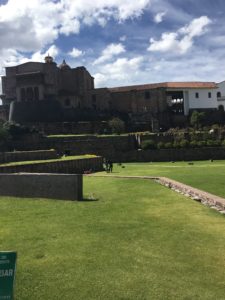
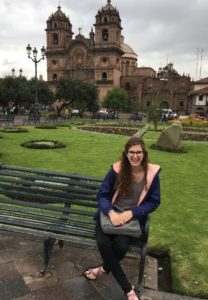 in the Plaza de Armas!
in the Plaza de Armas!
My morning class runs from 9am-1pm, I have an hour lunch break from 1-2pm, and from 2-4pm, I have afternoon private lessons. My small group morning instructor, Rosa, is very kind and patient (thank goodness!) I have two other people in my class, a girl traveling with her boyfriend, and a missionary who recently moved to Peru with his wife. I enjoy class with them very much.
My private instructor, Vaneza, is spunky and sweet! The majority of the class consists of the two of us talking about anything and everything, interspersed with mini-lessons when I make a grammatical blunder or am in need of a word. On Wednesday, Vaneza took me out to lunch at one of her favorite restaurants just down the street from class. We got a bread with a guacamole-tasting-dip appetizer, a large bowl of traditional Peruvian soup, pesto pasta and chicken, tea, and chicha morada dessert–chicha morada is a popular beverage made from purple corn. The dessert version of this beverage was mild flavored with a consistency somewhere in-between jello and jelly. We got all this for just 8 soles (1 USD is the equivalent of 3 Peruvian soles!) Lunch was all in Spanish…of course!
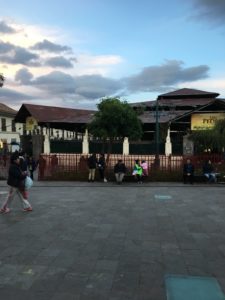 the San Pedro Market
the San Pedro Market
I really love Vaneza. She encourages me to speak and I can already see an improvement in just the simple fact that here, as opposed to in school, I am less worried about having the “wrong answer.” This way, I can speak freely and learn from the errors that I make.
After being here a week, I feel that I know my way around the city fairly well. The other ten-or-so people living in the house (the number of residents fluctuates from day-to-day) have been very helpful in helping me find my way around. At dinner, somebody always seems to have a new activity, restaurant, or shop recommendation to share with the group. We all went out two nights last week after dinner (one of the times, just for sweet-potato donuts), which ended up being a pretty fun! Everyone in the house, so far, has been extremely nice. In fact, one couple let me tag along with them on their day-trip to Rainbow Mountain.
In summary, the day of the hike up Rainbow Mountain marked what may have been the most strenuous physical activities in my life. The peak of the mountain rests 5,200 meters above sea level and is 5 ½ miles uphill. Hiking 5 ½ miles at a sharp incline is hard enough as it is, but the added factor of subtracted oxygen made even the simple task of breathing a challenge. It took about 2 ½ hours to get to the top of the mountain. Although the hike was rough, to say the least, I am glad I decided to complete this hike…the view at the top was definitely worth the trek. The mountain is called “Rainbow Mountain” because the mineral deposits on the mountain make the mountain look a little like a rainbow!
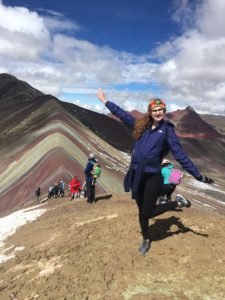 on Rainbow Mountain!
on Rainbow Mountain!

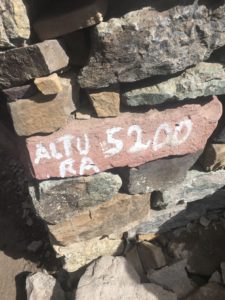
This morning, I walked to the Plaza de Armas, the main square just down the street from my school, for mass at the Cusco Cathedral. The Cathedral was absolutely packed. They have four masses a day from 6-10am on the hour, and the 8am mass, of which I was in attendance, is celebrated by the Bishop in Spanish. I was delighted to find that I was able to understand the majority of the homily. After mass, I found myself in the middle of a military parade, which apparently happens every Sunday according to a friendly man trying to sell paintings on the street.
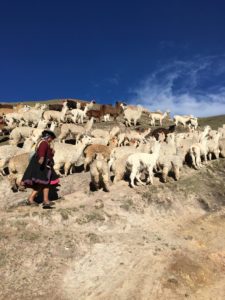
More to come later!
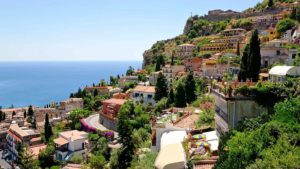 Last night, my friends and I went to a live Tarantella performance at one of the restaurants in town. While not exactly a holiday, you’d have thought the dancers were celebrating something. The traditional costumes, songs, and dances made for an incredible show. The performers also got members of the crowd involved (including myself) by allowing them to play some of the instruments or dancing with them. In the picture below you can see the Tarantella costumes as well as the children at the table playing some of the traditional Neapolitan instruments.
Last night, my friends and I went to a live Tarantella performance at one of the restaurants in town. While not exactly a holiday, you’d have thought the dancers were celebrating something. The traditional costumes, songs, and dances made for an incredible show. The performers also got members of the crowd involved (including myself) by allowing them to play some of the instruments or dancing with them. In the picture below you can see the Tarantella costumes as well as the children at the table playing some of the traditional Neapolitan instruments.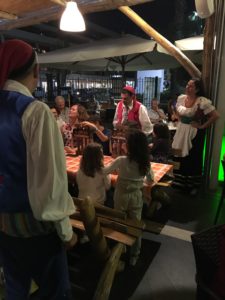 Before we went to the show, we got a little history lesson on the dance from our host mother. Apparently, the Tarantella is widely regarded as Southern Italy’s most famous form of traditional music. The dance originated as a way to cure those who suffered from “tarantula” (actually wolf spider) bites, as it was supposed to help rid the victim of the spider’s venom. Another use for the dance in traditional times was as a means of courtship. The Tarantella began in the Puglia region (where Nick and I were last weekend), and then spread throughout southern Italy, taking on different variations in each area.
Before we went to the show, we got a little history lesson on the dance from our host mother. Apparently, the Tarantella is widely regarded as Southern Italy’s most famous form of traditional music. The dance originated as a way to cure those who suffered from “tarantula” (actually wolf spider) bites, as it was supposed to help rid the victim of the spider’s venom. Another use for the dance in traditional times was as a means of courtship. The Tarantella began in the Puglia region (where Nick and I were last weekend), and then spread throughout southern Italy, taking on different variations in each area. 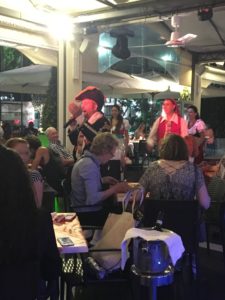 I apologize for the quality of the pictures, but there was a lot of movement going on so it was difficult to capture any perfect shots. Seeing the show was probably one of the most interesting things we’ve done here in Sorrento. It was really cool to witness and take part in a little piece of Neapolitan tradition. The restaurant hosts the performance every Wednesday night, so hopefully we’ll be able to go again. And more than just being an interesting experience, it was also a lot of fun!
I apologize for the quality of the pictures, but there was a lot of movement going on so it was difficult to capture any perfect shots. Seeing the show was probably one of the most interesting things we’ve done here in Sorrento. It was really cool to witness and take part in a little piece of Neapolitan tradition. The restaurant hosts the performance every Wednesday night, so hopefully we’ll be able to go again. And more than just being an interesting experience, it was also a lot of fun!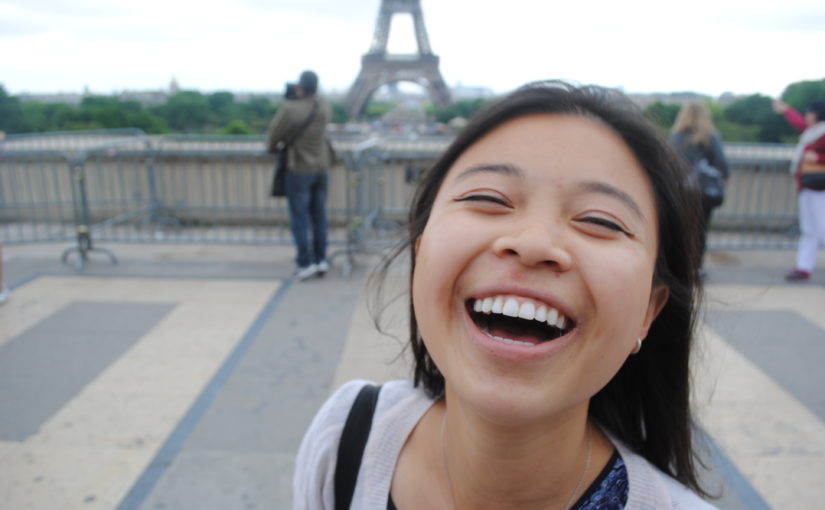
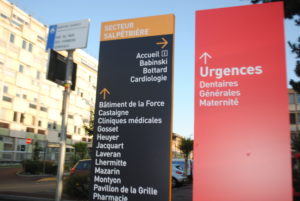

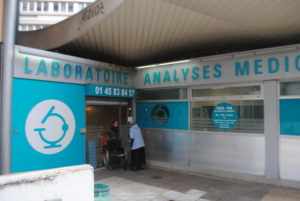
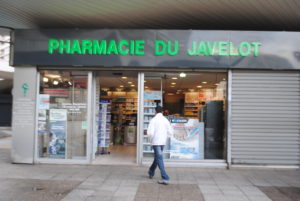
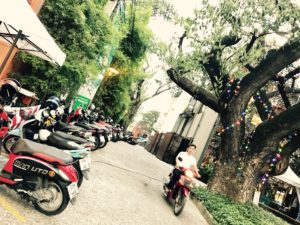
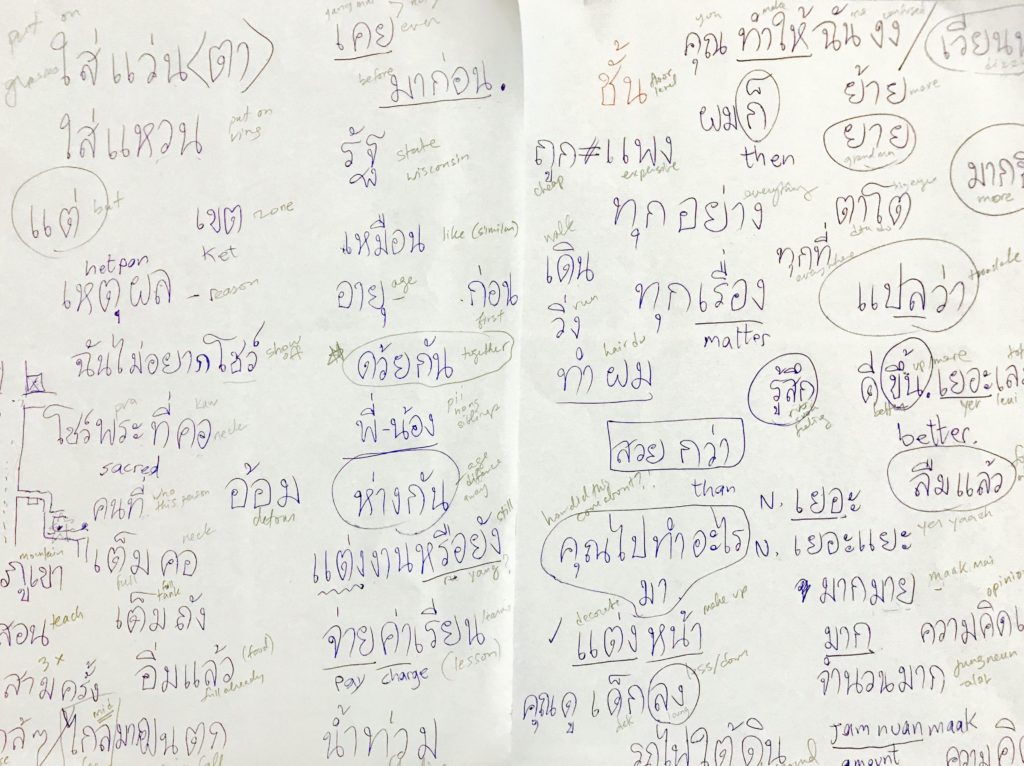




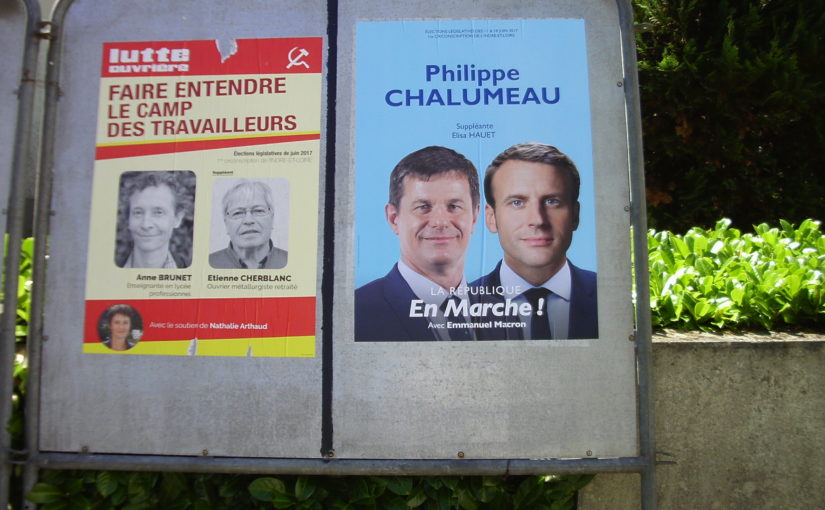
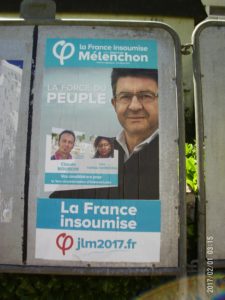
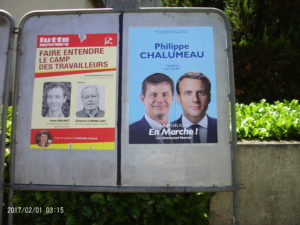
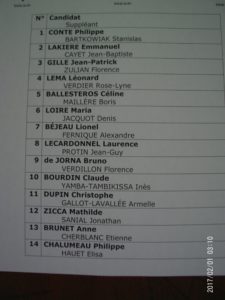
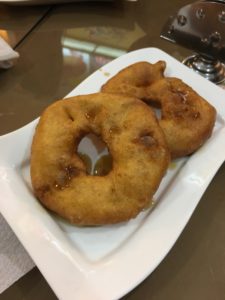

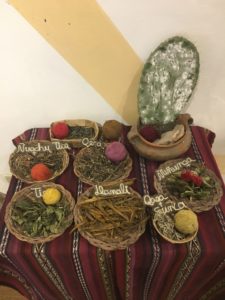


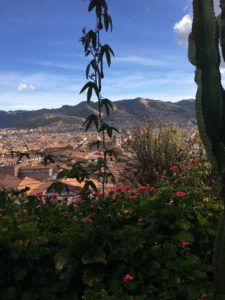
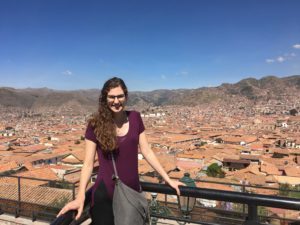
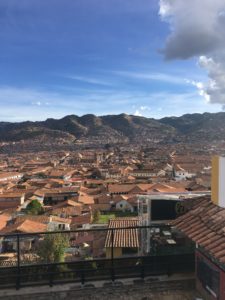

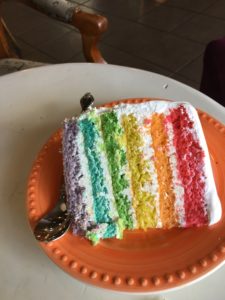
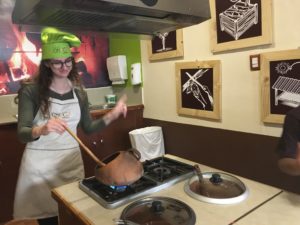
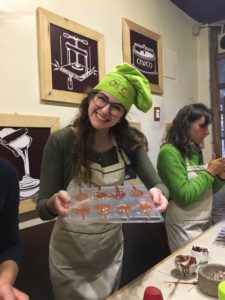
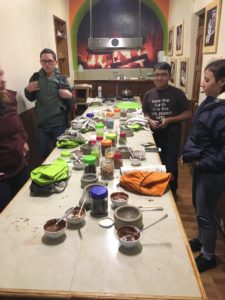
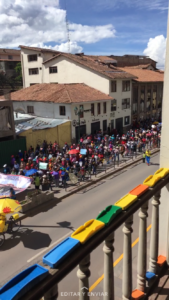
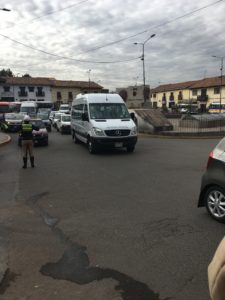

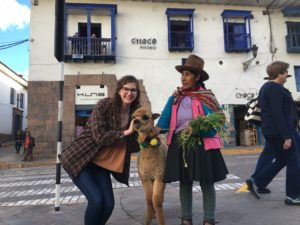
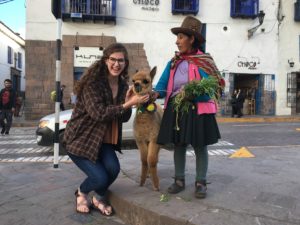
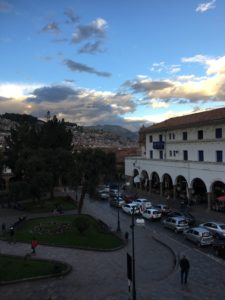
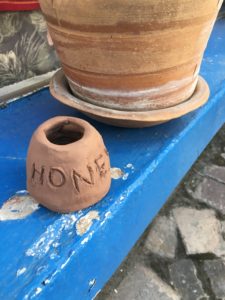
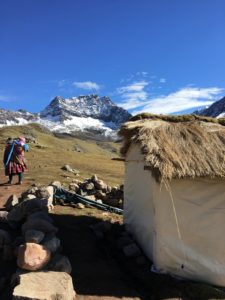
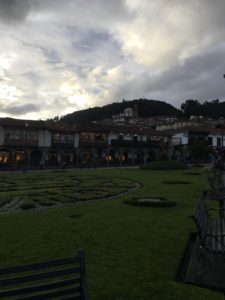

 my house from the street
my house from the street  coca tea!
coca tea!
 in the Plaza de Armas!
in the Plaza de Armas! the San Pedro Market
the San Pedro Market on Rainbow Mountain!
on Rainbow Mountain!


